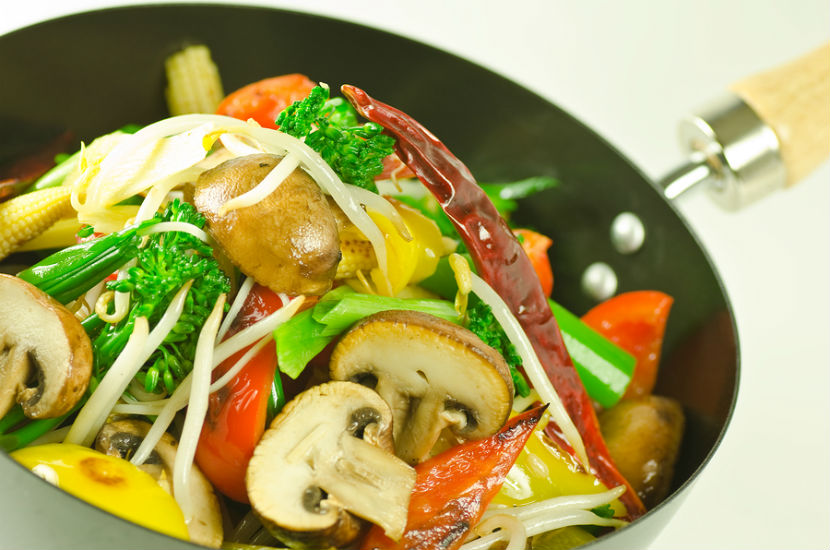
Following a gluten-free diet can be a challenge. Planning your meals can help make it easier. Use this sample meal plan to give you ideas on how you can enjoy nutritious gluten-free eating.
Sample gluten-free menu
Here is a sample gluten-free meal plan. The amount of food you need depends on your age, activity level and sex. You can tailor this menu plan to meet your needs or meet with a dietitian for personalized advice.
|
Breakfast
|
175mL (3/4 cup) warm cooked millet, amaranth, quinoa or pure, uncontaminated oatmeal, 15mL (1 Tbsp) ground flax seed, 1 hard boiled egg, 125mL (1/2 cup) fresh fruit (like apple, pear, banana or blueberries), 250mL (1 cup) tea or coffee
|
|
Morning snack
|
| 125mL (1/2 cup) yogurt*, 2 mandarin oranges, water |
|
|
Lunch
|
Noodle and vegetable salad - 250mL (1 cup) soba noodles (100% buckwheat) - 250mL (1 cup) of mixed shelled edamame, shredded carrots and shredded cabbage - 75g (1/3 cup) canned chickpeas, lentils or mixed beans, rinsed and drained - ½ avocado, sliced - 15mL (1 Tbsp) sesame seeds - 15mL (1 Tbsp) gluten-free salad dressing* - 125mL (1/2 cup) fruit (like strawberries, mango or peaches), water
|
|
Afternoon snack
|
30g (1/4 cup) almonds, 1 small apple or 6 dried apricots, 30g (1/4 cup) cheese, cubed (like mozzarella, cheddar, gouda or Swiss), tea
|
|
Dinner
|
Stir-fry - 75g (2 1/2oz) chicken, firm tofu or shrimp - 250 mL (1 cup) mixed vegetables, such as red pepper, broccoli, carrots and snap peas - 250mL (1 cup) brown rice - 15mL (1 Tbsp) oil - Gluten-free sauce or seasoning*, water
|
|
Evening snack
|
1 homemade whole grain muffin made with gluten-free flour or 2 gluten-free* cookies, 250mL (1 cup) fortified plant-based beverage
|
*Look for products that say “gluten-free” on the label. If a product doesn’t say “gluten-free”, read the ingredient list. Canadian guidelines require that gluten-containing products be clearly labelled. The ingredient list will say “contains: wheat/gluten” if it contains this ingredient so you can avoid it. If you are unsure about an ingredient, contact the company and ask.
Try some of these gluten-free recipes in your meal plan:
Tips for gluten-free eating
- Use Canada’s Food Guide to help you plan healthy meals. Vegetables and fruit and proteins are naturally gluten-free. For a list of grain products that you can eat, read Eating Well with Celiac Disease.
- Choose high-fibre, gluten-free grains more often, like soba noodles (100% buckwheat), quinoa or brown rice.
- Make your own bread and baked goods using gluten-free flour. This can help save money and be more nutritious.
- Read food labels when grocery shopping. Look for products that say “gluten-free” on the label.
- If a product doesn’t say “gluten-free”, read the ingredient list. Canadian guidelines require that gluten-containing products be clearly labelled. The ingredient list will say “contains: wheat/gluten” if it contains this ingredient so you can avoid it. If you are unsure about an ingredient, call the company and ask.
- Avoid buying foods from bulk food stores. Even if the ingredient or food is gluten-free, it may have come in contact with gluten-containing foods.
How can a dietitian help?
If you have celiac disease, the Canadian Celiac Association highly recommends consulting with a
dietitian who can work with you to carefully review your diet to make sure it does not contain gluten. Even if you don’t have celiac disease but are interested in following a gluten-free diet, a
dietitian can work with you to make sure you are eating a balanced diet and getting all the important nutrients you need to be healthy and meet your goals.
Connect with a dietitian today!
Bottom line
Eating healthy while living gluten-free means choosing a variety of naturally gluten-free foods and substituting with gluten-free alternatives. Follow Canada’s Food Guide when planning your nutritious gluten-free meals.
You may also be interested in:
Eating Well with Celiac Disease
Can People with Celiac Disease Eat Oats?
Fibre and the Gluten-Free Diet
This article was written and reviewed by dietitians from Dietitians of Canada. The advice in this article is intended as general information and should not replace advice given by your dietitian or healthcare provider.
Last Update – June 20, 2022